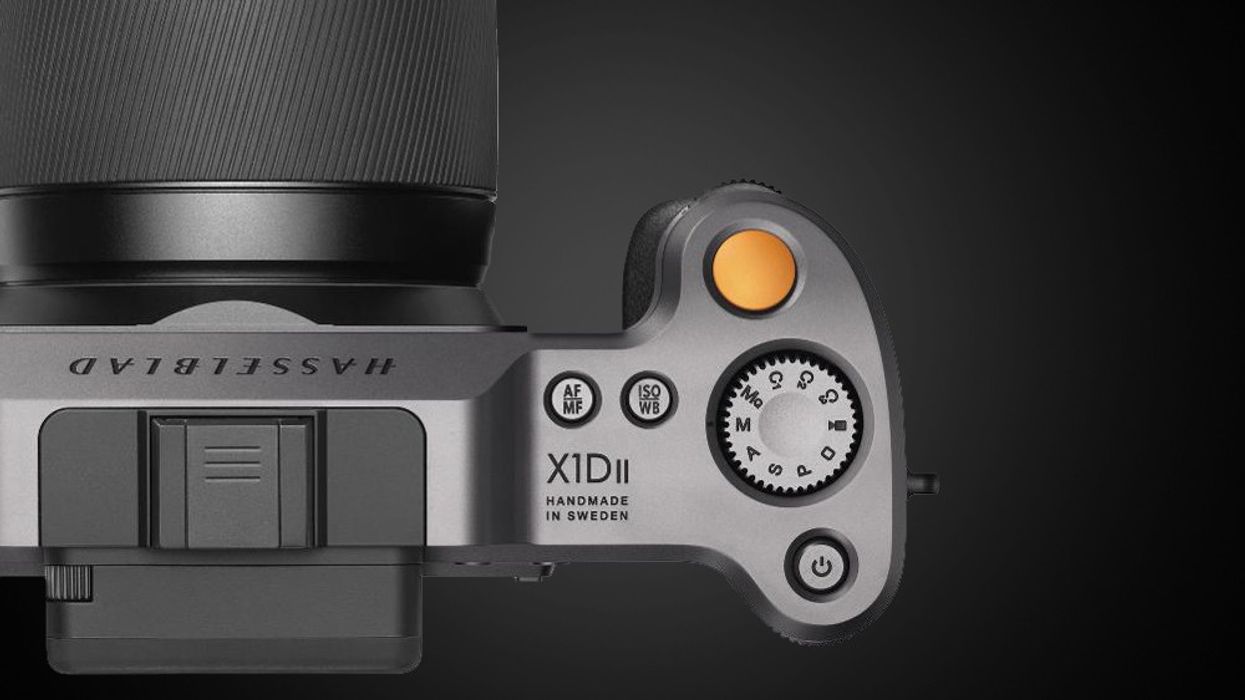Is Hasselblad's X1D II Resolution Upgrade Enough for Filmmakers?
True medium format cinematography inches closer to a competition with the new firmware release from Hasselblad.

Hasselblad has released a new firmware for its X1D line of medium format digital cameras that enables 2.7K video recording at 8-bit 4:2:0. Of course, you've been able to shoot medium format video from the H6D for several years now (we tested it way back in 2017), but the X1D-50c typically sells for about 1/3 the price of the H6D-50c. So, the news isn't video but video at a resolution higher than 1080p.
While it's better than 1080p, 2.7K (2720 x 1530) video is still not even 4K resolution in a world that is increasingly starting to talk about 8K capture, and a world where most of us have 4K available on our phones. So, what is the appeal here for filmmakers considering capture platforms?
The key is the combination of color science and the field of view you get out of a larger sensor, with its attendant lower noise. Hasselblad is especially famous for its color science and you can expect the video you get from this platform to live up to that as much as it can in an 8-bit container.
The big drawback to worry about is, of course, rolling shutter—that "jello" looking artifact you can get from a moving camera—which is something that most big sensor cameras struggle with in some way. Consider the slow refresh rate of the sensor, this camera is likely to have it, and that will require a lot of conscious effort to do smooth, silky work when choreographing moving shots.
Right now, however, this feels more like an add-on feature than a groundbreaking one. Of course, adding video to the 5D Mark II was originally meant to be an add-on as well, but then it turned out to be groundbreaking. It's likely that this isn't going to be a camera that takes over a lot of the indie filmmaking space in the way that those of us who love medium format hope it might.
While it's not that much more expensive than its competitors, like the Pansonic LUMIX DC-S1H, that camera offers 6K RAW recording, and video focused lens options that all come together to make for a compelling ecosystem. The new firmware only allows the Hasselblad to get to 2.5K, less than half the resolution you get from the S1H.
One important thing to remember is that Fujifilm has a competitor camera, the GFX-100, that is slightly more expensive, but offers a 4K readout. Since both cameras are built around sensors from Sony, the difference isn't in the RAW sensor data, but in how it's internally stabilized, processed, and recorded that creates different images.
Since there are a lot of great reviews out there for the video results from the GFX-100, especially in terms of how well it controls rolling shutter issues, Hasselblad has a lot to live up to in order to create heat for adding video features of its own. As we've seen over and over, "heat" in video can drive still photo sales. Even photographers who only need video on the rare occasion still want to feel like the camera they are investing in is capable of delivering it well.
Hopefully, there will be see some real-world results soon with the new firmware. This isn't likely to get many to convert, but if you are already invested in X1D, it's definitely going to be an appreciated feature.
You can download the new Hasselblad X1D II 50C and 907X firmware update here.
Source: Hasselblad














